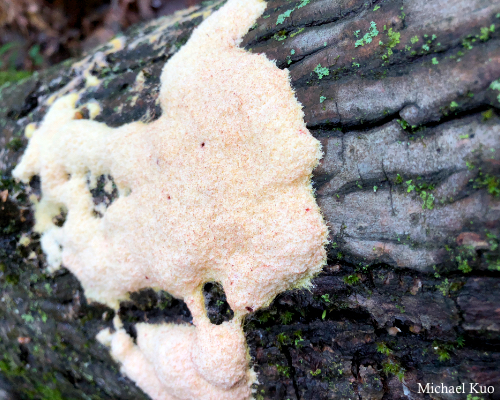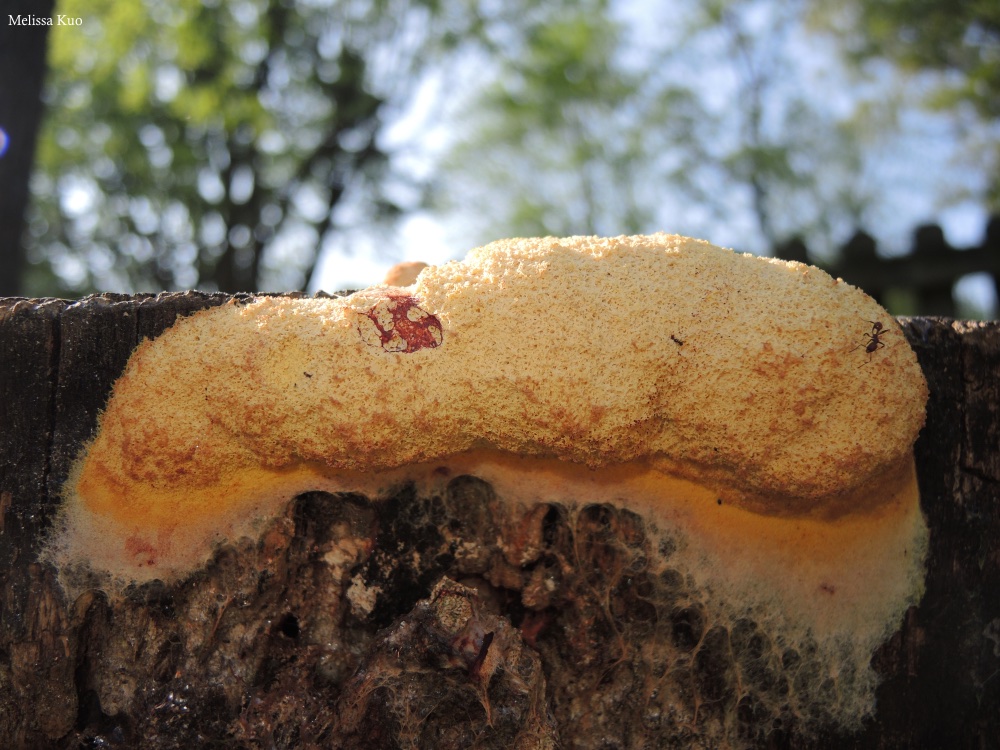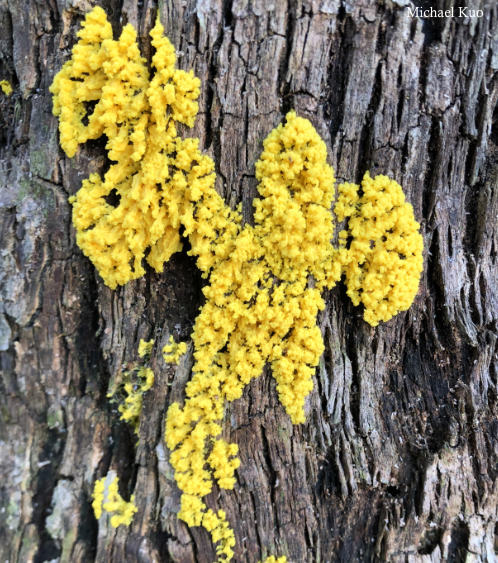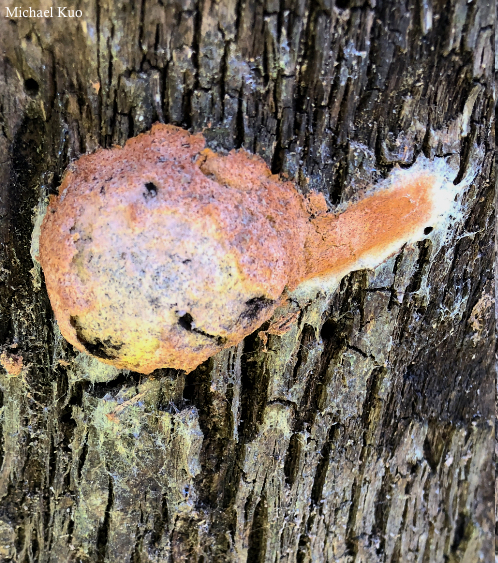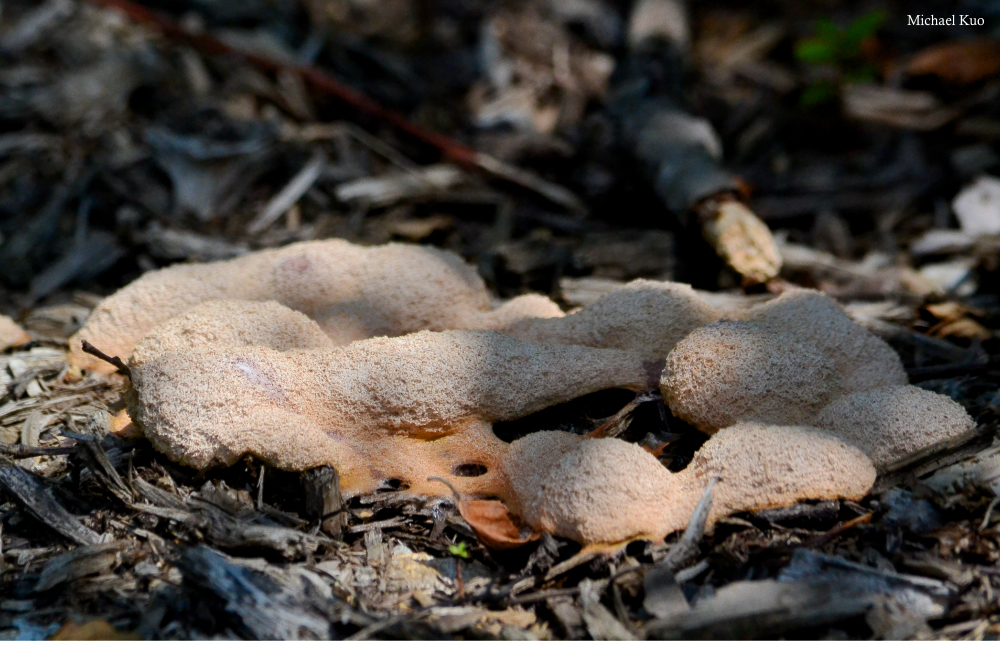|
Widespread not only in the Midwest but throughout North America, Fuligo septica is often encountered on woodchips or woody debris, spreading quickly into patches up to several yards across, composed of individual masses 10–30 cm across. It is a "slime mold"—neither plant, nor animal, nor fungus. Slime molds are diverse in appearance and reproductive strategies (and, it turns out, they are not actually as closely related to one another as once believed), but Fuligo septica can be distinguished by its large, spreading "aethalium," which looks a lot like something a dog vomited after eating too much lemon spongecake. This stage of the slime mold is the spore-releasing, reproductive stage; as the aethalium fades and begins to decay you may notice spore dust being released when the surface is disturbed. In an earlier stage of development Fuligo septica is less recognizable, appearing like a milky gelatinous mass that creeps around in search of food. You can see traces of this stage, known as the "plasmodium," at the edges of the aethalium in the photo below. In the Midwest Fuligo septica is most frequently seen in spring and early summer, though it also appears in late summer and fall.
|
 midwestern range |
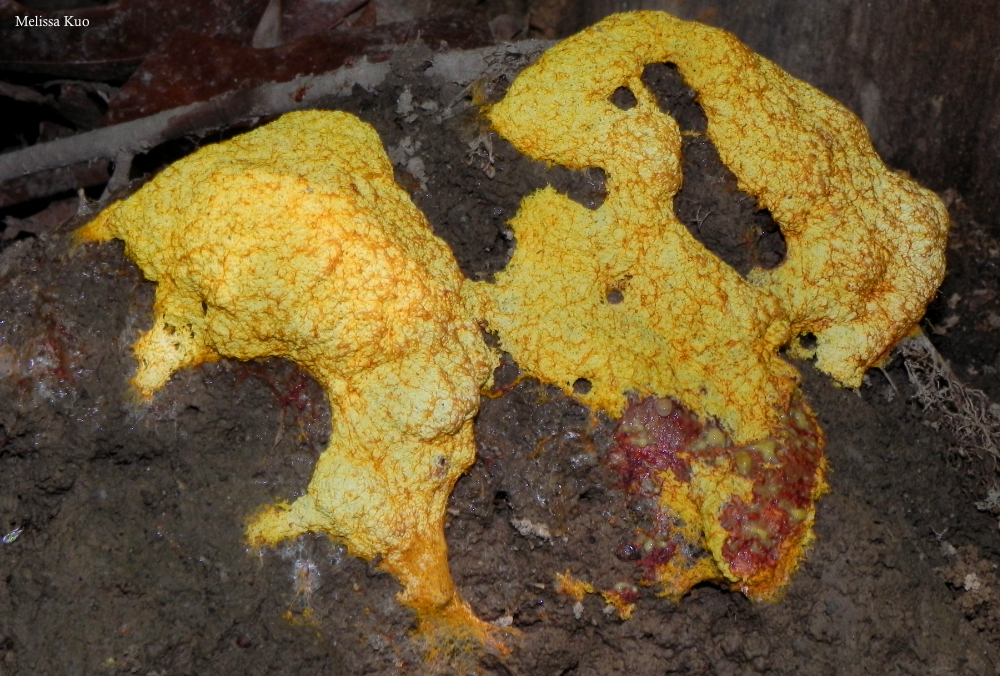
fresh aethalium with traces of plasmodium
|





